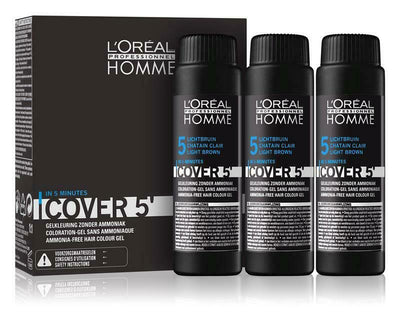Razor Burn Relief Tips And How To Prevent Them
For many men, shaving is a daily ritual that offers a fresh start to the day. However, a fresh shave can sometimes cause razor burn. This common irritation, characterized by redness, itchiness, and discomfort, has the potential to turn a grooming routine into a discomfort state . The good news is that razor burn can be avoided and with the right tips, you can take proactive steps to prevent and alleviate this common issue. In this comprehensive guide, we will explore a range of strategies designed to ensure a smooth, irritation-free shaving experience. From crafting a mindful pre-shave routine to selecting the best men’s grooming set and offering post-shave care, let's embark on a journey to discover how to say goodbye to razor burn and embrace the satisfaction of a flawlessly groomed appearance.
What Is Razor Burn?
Razor burn occurs due to friction between the razor blade and the skin, leading to irritation, redness, and sometimes even small bumps or ingrown hairs. It's most common in areas where the skin is sensitive, such as the neck and face.
Preventing Razor Burn:
Exfoliation is Key: Gently exfoliating the skin before shaving can help remove dead skin cells, allowing for a smoother shave. This can be done using a gentle scrub or exfoliating mitt. Not only will this extra step make you less prone to razor burns, but it can give you healthier and more glowing skin too!
Warm Water Prep: Prior to shaving, ensure your skin is exposed to warm water for a few minutes. This softens the hair and opens up the pores, making the hair easier to cut and reducing the chances of razor burn. Take a small towel and moisten it with lukewarm water then press it against the area you’ll be shaving for a few seconds.
Quality Shaving Cream or Gel: Invest in a high-quality shaving cream or gel. Sometimes, even the best face/hair shaver can leave nicks and burns. These products provide a protective barrier between the razor and the skin, reducing friction and irritation, making it less likely for you to get razor burns.
Avoid Dull and Unclean Blades: Using a sharp razor blade is crucial. Dull blades can tug at the hair, leading to increased irritation. Change your blades regularly to ensure a smooth shave. If you are using a hair trimmer or a hair shaver, make sure the blades are clean before using them, too!
Shave in the Right Direction: Shaving against the grain might give a closer shave, but it increases the likelihood of razor burn. Shave in the direction of hair growth to minimize irritation.
Use Minimal Pressure: Let the razor do the work. Applying too much pressure can lead to unnecessary friction and subsequent irritation.
How To Treat A Razor Burn
Cold Compress: If you experience razor burn, apply a cold compress to the affected area. This can help reduce inflammation and soothe the skin.
Aloe Vera Gel: Aloe vera has natural anti-inflammatory properties and can provide instant relief to irritated skin. Look for aloe vera gels without added fragrances or dyes.
Hydrating Lotions: Apply a gentle, hydrating lotion to the affected area. Look for products containing ingredients like chamomile or calendula, which are known for their soothing effects. Not sure where to start looking? You could start checking out the shaving set for men from reputable men’s grooming tool brands like Wahl or Andis.
Avoid Further Irritation: Give your skin a break from shaving for a few days to allow it to recover. Avoid using harsh skincare products or exfoliants during this time.
Stay Hydrated: Drinking plenty of water helps keep your skin hydrated and can contribute to faster healing.
Avoid Tight Clothing: If you have razor burns on your neck or other areas, opt for loose-fitting clothing to prevent additional irritation. If you’re just staying at home, it might even be more beneficial for you to stay in your comfort clothes.
Razor burn is a common concern, but with the right approach, you can significantly reduce its occurrence and alleviate discomfort. By following proper pre-shave routines, choosing the right razor, and practicing attentive post-shave care, you can enjoy a smooth, irritation-free shaving experience. Remember that every individual's skin is unique, so it might take some experimentation to find the combination of strategies that works best for you.








